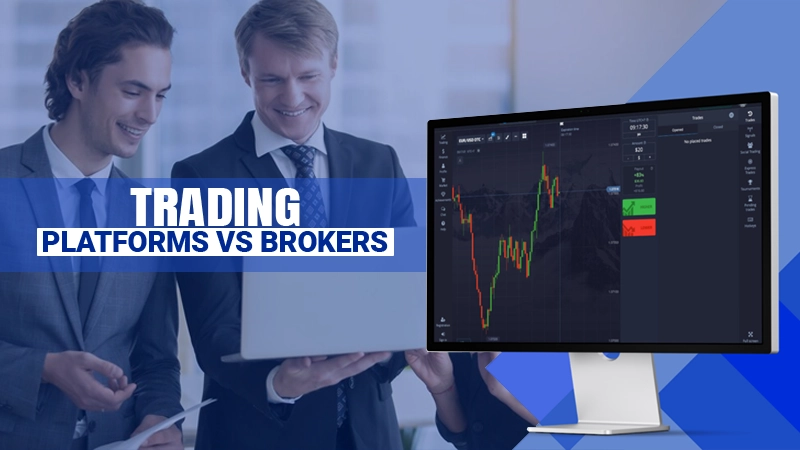How to Trade F and O?
Future and options contracts are one of the key instruments of derivative trading. If you are a beginner, there is a high chance that you aren’t aware of the derivatives – they are contracts whose value depends on the underlying asset or set of assets. These assets could be bonds, stocks, market indexes, or currencies. Now, you also have to know that there are different types of derivatives. Just like shares being traded in the exchanges, F and Os are traded in the Indian stock exchanges. You need to read on to understand them in depth.
What is F&O?
F&O means Futures and options: – they are known as the derivatives products that mean it derives the value from an underlying commodity or asset. They differ in fundamental ways from each other.
The Distinction Between Future and Options
Managing risk is the most important function of security markets, and one of the greatest risks is time. Time is a risk as prices change all the time. A profitable deal today can turn sour in a few months. Options and futures need to be understood in the concept of commodity markets.
Futures and options are not like bonds and securities – they don’t actually help you with long-term gains, but they are used to offset specific risks that arise because of the constant price change.
This is a factor for how they are different, and if you are thinking about investing in them as a beginner, you need the right market trends and the best stocks to watch out for. You will know more just as we go on.
Similar to other trades such as Bitcoin, Futures and Options are agreements to buy and sell assets in the future at specific prices and certain conditions. Though both – options and futures let an investor buy an investment at a particular price by a particular date – one works very distinctively from the other. An options contract gives the investor the right, but not exactly the obligation to buy and sell futures contracts.
Here are a few factors that can help you through the process of starting your trading activities with Futures and Options.
Things you Cannot Miss out Before Trading F&Os
- 1. Buying options mean limited risks, but you would rarely make any money. A lot of small F&O traders choose to buy it because the risks are limited to the premium that is paid. The issue is that globally, over 97% of these options will expire worthlessly. It means if you buy options, then you stand a 4% chance of making any money on these options.
Honestly, option sellers take a greater risk and thus make money more than often when compared to the option buyers.
If you are considering this trading strategy – do not be blindfolded by the argument of risk in buying options being limited – think about the turnover too.
- 2. Options are asymmetrical, and that is the distinction. In the case of options – the buyer has a loss that is limited to the premium, but the seller has a loss that is unlimited.
- 3. Futures are products that are leveraged, and they work both ways. The smart sales guy would have told you that since you only pay a 20% margin in the future, your profit could be multiplied five times. But, that is how it works; you will buy stocks that are worth Rs 1,00,000 in futures by paying Rs. 20,000 margins. When the price increases by 10%, then the profit of Rs.10,000 on your margin is 50% as it is leveraged five times. So, guess what – the smart sales guy was right! But the thing he did not mention was that it works similarly for losses, too, and they tend to get magnified when you trade futures.
As long as you are aware of the effects – it is all fine.
- 4. Margins on futures could be volatile quite often. Many people believe that futures have the merit over a cash market buying as they can leverage by buying on a margin of 15 percent. When you are prepared with liquidity up to 25%, the volatility in the stock all of a sudden goes up. And then the margins are revamped to 40 percent. You would either need to bring in fresh margins, or your broker will compulsorily cut your position.
So, everything you need to know is that you have to be aware of the risks that are involved while you trade F&O.
- 5. You have to keep on the eye – at all times, on the costs that you will take over while trading F&0. If you feel that brokerage and other costs on F&O are low – you might have to think again. In terms of percent, they can be lower than on equity, but you can churn more often in the case of F&O. The costs that add up, the brokerage that you pay, GST, stamp duty, statutory charges, and STT on F&O trades. If you sit down and add this, you need to get a clear perspective. You need to make sure that your ratio of profits to transaction cost is better than 3:1, or you are justifying your effort and trading in F&O.
- 6. You can always trade options when you are not quite sure of the direction in the market. The capability to adopt a non-directional strategy is one of the most enduring characteristics of the F&O market. They can be used to profit in a volatile market and in lackluster markets.
Conclusion
When you are thinking about trading F&O, the first thing you would have to do is to get the right set of research before you can even kick-start.













